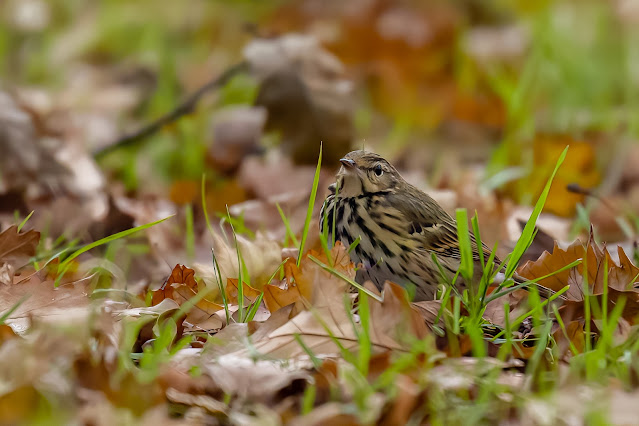I remember as a small boy, when I was first starting getting interested in birds, that one in particular seemed very exotic to me. Not a colourful finch or a large raptor but the alpine accentor. Basically a sparrow with a bit more colour, closely related to our dunnock. They are not super-rare over here with 37 or so records and are quite common in Europe in the high Alps. I really wanted to see one but so far had not managed it. So, when the phone pinged yesterday with one in Suffolk I changed plans and decided on a dawn raid. It roosted overnight in a Martello tower near Aldeburgh but they have a habit of clearing off overnight. I was in the car at 4am and on site by 6.30 with a weak sun just lightening the sky.
There were already a dozen cars there and I could see the faint outline of birders by the tower. I had a very quick coffee and joined them to stare into the gloom!
It was really dark but by 7 you could start to make out the area where it roosted overnight. These were taken later in the day. On top of the pipe you could make out a shape which another birder with an IR-scope could see was a bird.
By 7.15 it was light enough to make our that it was indeed the alpine accentor and that it had not departed overnight., Gradually it stretched its wings, had a scratch and then was gone round the tower towards the beach, where it had been feeding the day before.

The beach was narrow with boulders where the path dropped down to it. By now there were over 50 birders on site and we spread out to try and locate the bird.
After a nervous few minutes when we thought it might have just headed off it was spotted feeding near the path just beyond the metal gate.
It as some way off and the light was still pretty poor. Still, it was definitely the bird so the assembled crowd relaxed a bit as it looked pretty settled. For the next 30 minutes it gave us a bit of a run around as it moved along the edge of the path and the boulders by the beach.



You could now start to see the salient features of its plumage. Superficially like a dunnock, it had a reddish wash on its breast and flanks and white spots on its wing feathers as they cross on its back. It was feeding well and seemed quite relaxed as the crowd grew. It was a bit of a scrum as the path wasn't very wide and we were 4 or 5 deep initially. This created the obvious problems of those at the back being blocked by those at the front moving. Slowly the crowd spread onto the beach and some went down and behind the bird so we had a bit more space.
Having eaten up well for its breakfast it then decided it was time to get its plumage sorted. It moved down onto the rocks by the path and started showing really well and much closer.
Once it had got its feathers sorted out it spent a few minutes flying up and down the rocks and the beach, having a bit of a peck round but without much real purpose.
This also meant that the assembled crowd of birders were kept fit as they followed it along. Most of the time it only moved thirty or forty yards, often back to where it had been and giving those who stayed put incredibly close views.
Finally, it much have felt peckish as it flew up and onto the path where it split the crowd into two groups and fed on seed right between them. Initially it kept lurking in the grass where it played a bit of hide and seek with us.
Fortunately it decided to come right towards the group I was in, pecking at the dried seed heads as it came.
Thinking I was being clever I had dropped the tripod legs down to get a better angle for the photos. It also meant I was not in there way of those behind me as I was kneeling down - on gravel! After 5 minutes my knees were killing me and to be honest I was quite pleased when it flew off towards the tower!
It had given some stunning views and for most people, including me, this was enough and the crowd thinned as people headed back to their cars and home. I'll leave you with a quick video of it feeding on the path.
A brilliant day, a lifer and a lovely bird as well. Good craic with the assembled birders on site as well. Let's hope it's not the last lifer of the year but if it is, its a good way to finish!!!!



































































